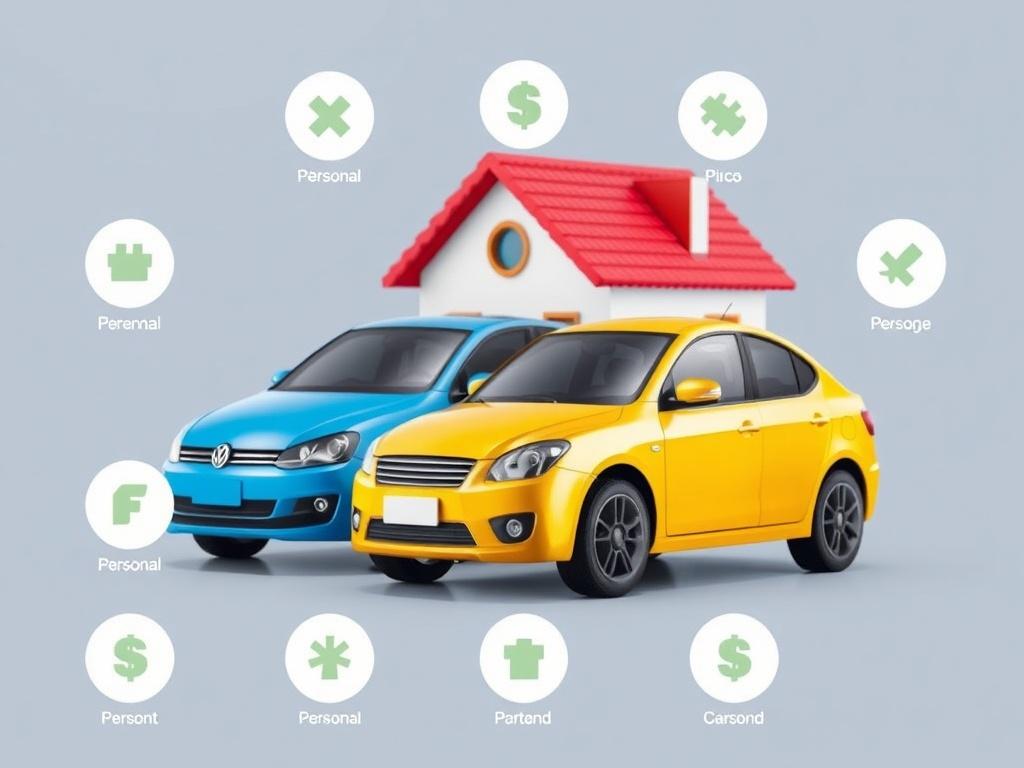SQLITE NOT INSTALLED
Loans are a fundamental part of modern financial life. Whether you’re looking to buy a new car, purchase your first home, or cover unexpected expenses, understanding the different types of loans available is key to making smart decisions. Loans come in many shapes and sizes, each designed to meet specific needs and financial situations. In this article, we’ll explore the most common types of loans — personal loans, auto loans, mortgage loans, and others — breaking down their features, benefits, and drawbacks to help you choose wisely.
Содержание
What Exactly Is a Loan?
Before diving into specific types, it’s helpful to understand what a loan is in basic terms. A loan is a sum of money borrowed from a lender, usually a bank, credit union, or online lender, that you agree to pay back over time with interest. The interest is the cost of borrowing and is typically expressed as an annual percentage rate (APR). Loans can be secured or unsecured. Secured loans require collateral — something valuable you pledge to back the loan — while unsecured loans do not.
Personal Loans: Flexibility and Convenience

Personal loans are often the first type of loan people consider when they need extra funds for various personal expenses. These loans are typically unsecured, which means you don’t have to put up collateral. Because of that, interest rates on personal loans can be higher than secured loans like auto loans or mortgages.
Uses of Personal Loans
Personal loans are versatile and can be used for many purposes:
- Debt consolidation
- Paying for medical bills
- Home improvement projects
- Financing a large purchase
- Covering emergency expenses
One of the main attractions of personal loans is their ease and speed of access. Many lenders offer quick approval times, sometimes within a day or two, making personal loans a convenient option in times of urgency.
Understanding the Terms
Personal loans vary widely in terms. The typical repayment period ranges from one to seven years, with fixed monthly payments. This predictability helps borrowers budget better. However, because personal loans are unsecured, you might find that interest rates hover between 5% to 36% depending on your creditworthiness.
Auto Loans: Financing Your Vehicle Purchase
If you’re planning to buy a vehicle, an auto loan is likely the financing option you’ll consider. Auto loans are specifically designed to help you purchase a car, motorcycle, truck, or other vehicles. Unlike personal loans, auto loans are secured loans, with the vehicle acting as collateral for the lender.
How Auto Loans Work
When you take out an auto loan, the lender provides the funds needed to purchase your vehicle upfront. You then repay that amount over time, with interest. If you fail to keep up with payments, the lender can repossess the vehicle.
Key Features of Auto Loans
Auto loans usually have terms ranging from 36 to 72 months (3 to 6 years), but some lenders offer longer terms. Longer terms mean smaller monthly payments but often higher overall interest costs. Interest rates on auto loans can be as low as 3% for borrowers with excellent credit, but they may be much higher for those with poor credit.
Tips for Getting the Best Auto Loan
- Compare offers from multiple lenders, including banks, credit unions, and dealership financing.
- Check your credit score ahead of time to understand what interest rate you might qualify for.
- Consider making a larger down payment to reduce the loan amount and interest charges.
- Be wary of loan terms that extend beyond 60 months, as depreciation and loan balance can become problematic.
Mortgage Loans: Financing Your Home Purchase

Perhaps the most impactful loan most people ever take is a mortgage loan. Buying a home is a major financial decision, and mortgage loans help make that possible by allowing you to spread the cost over many years.
What Is a Mortgage Loan?
A mortgage loan is a secured loan where your home acts as collateral. If you don’t keep up with payments, the lender has the right to foreclose and sell your home to recover the money lent. Mortgages are typically the largest loans people take out, with long repayment periods and varying interest rates.
Types of Mortgage Loans
There are many different mortgage types, and choosing the right one depends on your financial situation and goals. Here are some common types:
| Mortgage Type | Description | Pros | Cons |
|---|---|---|---|
| Fixed-Rate Mortgage | Interest rate remains the same throughout the term. | Predictable monthly payments, stability. | Higher initial rates than adjustable options. |
| Adjustable-Rate Mortgage (ARM) | Interest rate changes periodically based on market rates. | Lower initial rates, potential savings. | Payment uncertainty, risk of rising rates. |
| FHA Loan | Government-backed loan designed for low-to-moderate income borrowers. | Lower down payment requirements. | Mortgage insurance premiums required. |
| VA Loan | Loan program for eligible veterans and active military members. | No down payment, competitive rates. | Limited to specific groups. |
| Interest-Only Loan | Only interest is paid initially, principal later. | Lower early payments. | Higher payments later, risk of owing more than home value. |
How to Choose the Right Mortgage
Shopping for a mortgage requires careful consideration. Factors like your credit score, income stability, how long you plan to stay in the home, and current market conditions should influence your decision. It’s a good idea to get pre-approved so you know your borrowing limit. Also, consider additional costs like property taxes, homeowner’s insurance, and private mortgage insurance (PMI) when budgeting.
Other Common Types of Loans
Beyond personal, auto, and mortgage loans, several other loan types can meet various needs. Here’s an overview of some commonly encountered ones:
Student Loans
Education can be expensive, and student loans are designed to help cover tuition, books, and living expenses during college or professional training. Student loans often have lower interest rates and deferred payment options while you’re in school. There are government-sponsored loans like federal student loans and private loans offered by banks or lenders.
Home Equity Loans and Lines of Credit (HELOCs)
If you own a home, you might be able to borrow against its equity with these loans. A home equity loan offers a lump sum with fixed payments, while a HELOC works like a credit card, giving you access to funds over time.
Payday Loans
Payday loans are short-term, high-interest loans that are typically due on your next payday. They are easy to get but often come with extreme interest rates and fees. These loans should be approached with caution.
Business Loans
For entrepreneurs or established business owners, business loans help fund startup costs, equipment purchases, or expansion. Terms and rates vary widely depending on the lender and business profile.
A Handy Comparison Table of Popular Loan Types
| Loan Type | Secured/Unsecured | Typical Uses | Typical Terms | Interest Rates |
|---|---|---|---|---|
| Personal Loan | Unsecured | Debt consolidation, emergencies, purchases | 1-7 years | 5% – 36% |
| Auto Loan | Secured (vehicle) | Vehicle purchase | 3-6 years | 3% – 10% |
| Mortgage Loan | Secured (property) | Home purchase | 15-30 years | 2.5% – 6% |
| Student Loan | Mostly unsecured | Education costs | 10-25 years | 3% – 8% |
| Home Equity Loan/HELOC | Secured (home) | Home improvements, debt consolidation | 5-30 years | 4% – 10% |
| Payday Loan | Unsecured | Emergency cash, daily expenses | Typically 2-4 weeks | Very high (up to 400% APR) |
| Business Loan | Varies | Business startup, expansion | 1-25 years | 4% – 15% |
How to Choose the Right Loan for You

When choosing between different types of loans — personal, auto, mortgage, or others — it’s important to assess your financial situation, loan purpose, and ability to repay. Here are some tips:
- Identify Your Need: Is this loan for a necessity like a home or car, or a flexible need like consolidating debt? The loan type should match the purpose.
- Check Your Credit Score: Your creditworthiness affects loan eligibility and interest rates.
- Compare Rates and Terms: Look beyond the monthly payment; understand the total cost of the loan over time.
- Plan for Repayment: Make sure your budget can handle monthly payments without strain.
- Understand Fees and Penalties: Some loans come with origination fees, prepayment penalties, or late charges.
Common Questions About Loans
Can I Have More Than One Loan at a Time?
Yes, many people manage multiple loans simultaneously, such as a mortgage and a personal loan. The key is ensuring your combined debt payments fit comfortably within your income.
What Happens if I Miss a Loan Payment?
Missing payments can lead to penalties, increased interest rates, and damage to your credit score. For secured loans like auto loans or mortgages, the lender may repossess the collateral after late payments.
Are There Alternatives to Taking Loans?
Sometimes borrowing may not be the best solution. Alternatives include saving over time, using credit cards wisely, seeking assistance programs, or negotiating payment plans with creditors.
Final Thoughts on Loans and Borrowing
Loans can be powerful financial tools when used responsibly. Understanding the different types of loans — personal loans, auto loans, mortgage loans, and others — helps you make informed decisions that align with your needs and financial goals. Always read the fine print, shop around for the best terms, and avoid borrowing more than you can comfortably repay.
Conclusion
Navigating the world of loans can seem overwhelming at first, but breaking down the options — personal, auto, mortgage, student, and others — reveals that each loan type serves a distinct purpose and audience. The choice of loan should always be guided by your individual circumstances, financial health, and long-term objectives. By researching your options carefully, comparing interest rates and terms, and understanding repayment responsibilities, you put yourself in the driver’s seat to use loans as effective tools for building your financial future, rather than burdensome obligations. Remember, borrowing wisely today can open doors to opportunity and financial stability tomorrow.
Опубликовано: 23 July 2025 Кредитрон – блог о кредитах, финансах и прочих реверансах
Кредитрон – блог о кредитах, финансах и прочих реверансах

